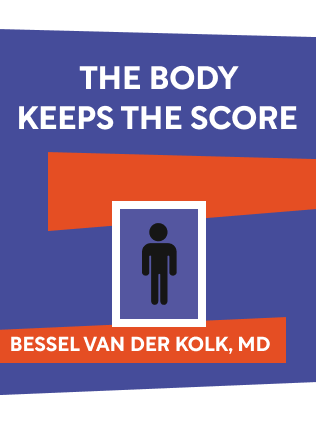

This article is an excerpt from the Shortform book guide to "The Body Keeps The Score" by Bessel van der Kolk. Shortform has the world's best summaries and analyses of books you should be reading.
Like this article? Sign up for a free trial here .
Is yoga a PTSD treatment? Can yoga help people heal and recover from trauma?
Yoga as a PTSD treatment may have some merits. Because it teaches you breathing techniques and how to connect to your body, yoga PTSD treatment is common.
Read more about yoga, PTSD treatment, and how it might help people heal.
Yoga as a PTSD Treatment
Does yoga PTSD treatment work? A lot of evidence suggests it does. Because of yoga’s focus on connecting the body and mind and on breathing, yoga for PTSD can be a helpful treatment.
Heart Rate Variability (HRV)
Heart rate variability (HRV) is the balance between how your heart rate rises and falls. As we explained earlier, your inhales activate the sympathetic nervous system (SNS), which increases heart rate and fuels arousal, while your exhales stimulate the parasympathetic nervous system (PNS), which slows your heart rate and aids body functions like digestion and healing of wounds. A healthy balance between your arousal and relaxation — your HRV — indicates that your autonomic nervous system (ANS) is in good working order, and that helps you stay calm and in control in the face of minor challenges.
Poor HRV means your breathing and heart rate are out of synch, which has negative effects on how you think, feel, and respond to stress; it can make you vulnerable to physical issues such as heart disease and cancer, as well as depression and PTSD. Trauma survivors have low HRV, which helps explain why they are hyperreactive to minor threats and stresses.
You can train yourself to change your breathing (and thus improve your HRV) through yoga as well as certain devices and smart phone apps. Improved HRV can help with depression, anxiety, and anger issues as well as high blood pressure, high stress hormone levels, lower back pain, and asthma.
Yoga for PTSD
There is a relationship between yoga and PTSD healing. Several aspects of yoga make it an incredibly healing treatment for trauma survivors. First, yoga’s inherent focus on the breath — moving with each inhale and exhale, noticing whether your breath is fast or slow, and counting breaths in certain poses — improves HRV.
Second, yoga teaches you to listen and respond to your body, ultimately helping trauma survivors be more aware of and comfortable in their bodies. Often trauma survivors learn to shut out and dissociate from their physical sensations, so yoga can help them reconnect with their bodies. You need to feel connected with your body in order to have a sense of self; if you can’t understand what your body is telling you (e.g. are you hungry, or are you anxious?) then you can’t identify how you feel or what you need, and you won’t be able to properly take care of yourself. Once you feel safe in your body, you’re also better able to articulate your emotions and even traumatic memories that were previously overwhelming.
Third, yoga teaches students to notice the emotions that are connected to certain physical sensations. This is especially critical for trauma sufferers, because certain physical sensations and poses can trigger flashbacks (for example, many sexual assault survivors may feel panic in poses that have them lying on their backs with their feet up in the air). As long as trauma sufferers approach yoga at a slow pace and avoid becoming overwhelmed, the practice can help them work through those intense emotions.
Finally, yoga and body awareness improve trauma sufferers’ sense of time. Trauma causes people to feel stuck in their traumatic memory, and they struggle to be present; yoga encourages you to be present by focusing on your breath and body sensations, and reinforces the fact that experiences are transitory (e.g. as hard as this pose may be, you only need to endure it for ten breaths).
Yoga’s positive effects can even be seen in the brain: A study of women with histories of intense trauma found that 20 weeks of yoga increased activity in the insula and medial prefrontal cortex (MPFC), where trauma survivors typically have abnormally low activity. The insula takes sensory information and signals the amygdala in case it needs to trigger a fight-or-flight response, and the MPFC is the watchtower described earlier, which logically weighs information and balances out the response of the amygdala (the smoke detector). In other words, yoga strengthens the parts of the brain that help prevent you from overreacting to minor threats.
There is a connection between yoga and PTSD that can help people heal.

———End of Preview———
Like what you just read? Read the rest of the world's best book summary and analysis of Bessel van der Kolk's "The Body Keeps The Score" at Shortform .
Here's what you'll find in our full The Body Keeps The Score summary :
- How your past trauma might change your brain and body
- What you can do to help your brain and body heal
- Why some trauma survivors can't recognize themselves in the mirror






